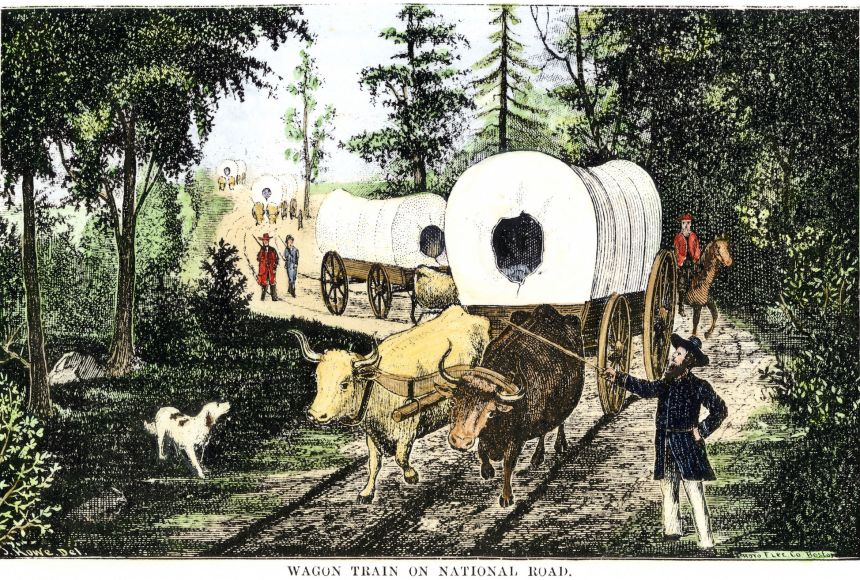ENCYCLOPEDIC ENTRY
ENCYCLOPEDIC ENTRY
The Cumberland Road
The Cumberland Road
The Cumberland Road, also known as the National Road or National Turnpike, was the first road in U.S. history funded by the federal government. It promoted westward expansion, encouraged commerce between the Atlantic colonies and the West, and paved the way for an interstate highway system.
Grades
5 - 8
Subjects
Geography, Human Geography, Social Studies, U.S. History
Image
Cumberland Road Wagons
Stretching from Cumberland, Maryland, to St. Louis, Missouri, the Cumberland Road was the first road funded by the U.S. federal government. It was a popular route for commercial trade in the 1840s by Conestoga wagons.
Image from the North Wind Picture Archives

Media Credits
The audio, illustrations, photos, and videos are credited beneath the media asset, except for promotional images, which generally link to another page that contains the media credit. The Rights Holder for media is the person or group credited.
Director
Author
Production Managers
Program Specialists
Producer
Intern
other
Last Updated
September 13, 2024
For information on user permissions, please read our Terms of Service. If you have questions about how to cite anything on our website in your project or classroom presentation, please contact your teacher. They will best know the preferred format. When you reach out to them, you will need the page title, URL, and the date you accessed the resource.
Media
If a media asset is downloadable, a download button appears in the corner of the media viewer. If no button appears, you cannot download or save the media.
Text
Text on this page is printable and can be used according to our Terms of Service.
Interactives
Any interactives on this page can only be played while you are visiting our website. You cannot download interactives.